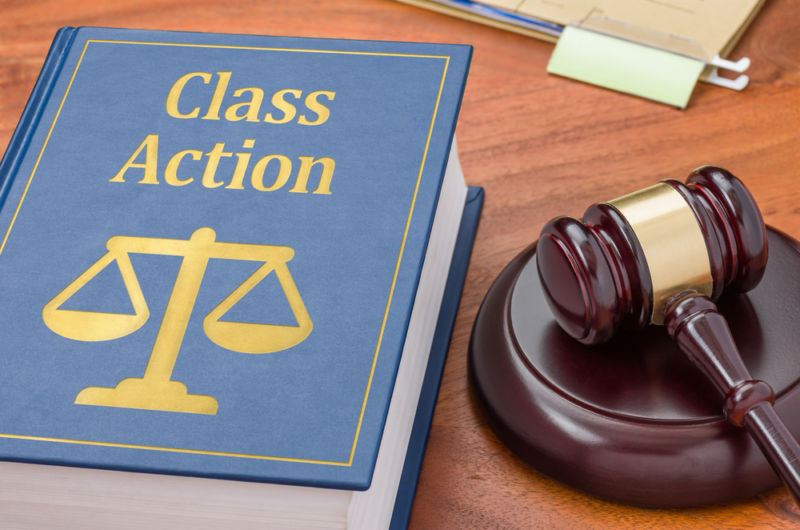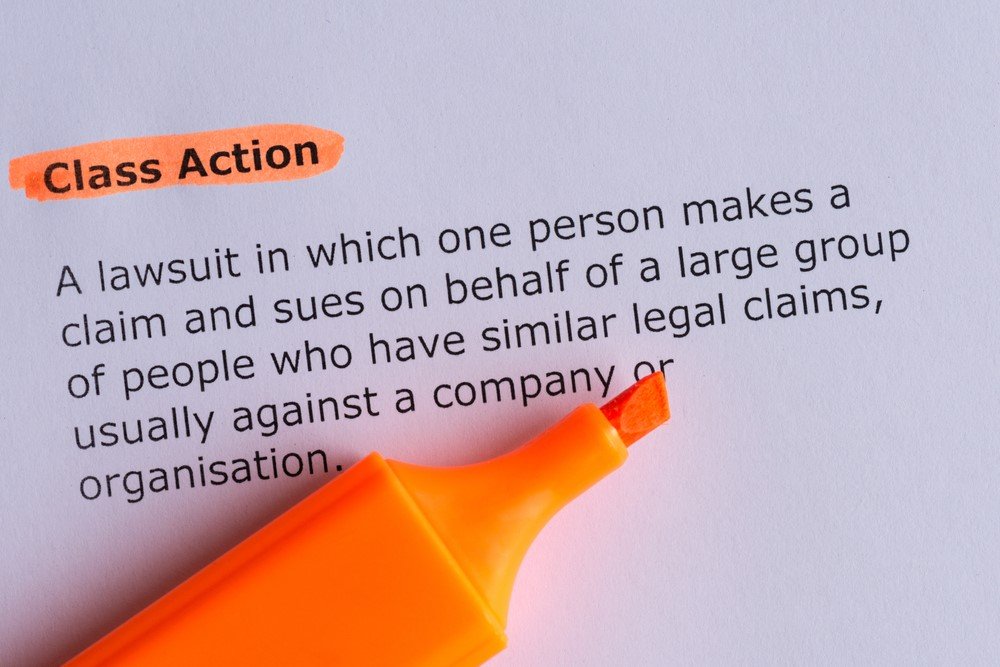Debunking Class Activity Claims: A Closer Consider Lawful Procedures
Class activity suits can be challenging and complex, usually shrouded in a veil of enigma for those unknown with the legal process involved. However, getting a deeper understanding of these claims is important, as they work as an effective device for individuals to look for justice and hold companies accountable. In this discussion, we will certainly debunk class activity lawsuits, taking a better look at the different facets of the legal procedures. From recognizing the criteria for class activity qualification to the function of course reps, and from the process of course qualification to the resolution of these suits, we will certainly untangle the intricacies and dropped light on the internal workings of this legal system. Allow's dive right into the globe of course action suits and uncover the intricacies that lie underneath the surface area.
Comprehending Class Action Suits
Comprehending Class Action Lawsuits calls for a thorough exam of the lawful procedures included in collective litigation. Course activity claims are a sort of legal action where a team of people with similar claims or grievances collaborate to start a claim against a typical accused. This kind of litigation enables people with limited sources to collectively seek justice, as it incorporates the stamina of multiple specific cases into a single lawful action.
The procedure starts with the identification of a lead plaintiff or course representative that files the first problem on behalf of the whole class. The court then establishes whether the situation meets the needs for class qualification, that include commonness, numerosity, typicality, and competence of representation. If accredited, the court notifies possible class participants, providing a possibility to opt-out if they want to seek their insurance claims independently.
When the course is accredited, the lawsuits proceeds with various phases, consisting of discovery, activity practice, and, if essential, trial. The result of the lawsuit can lead to a negotiation or a judgment, which is binding on all course participants unless they select to opt-out. Course action suits can incorporate a broad variety of lawful issues, such as customer defense, safety and securities fraudulence, employment discrimination, and environmental injury.
Understanding the nuances of course activity lawsuits is vital for both accuseds and complainants entailed in collective litigation. It needs a comprehensive understanding of the lawful needs for certification, the rights and responsibilities of course participants, and the possible benefits and risks connected with safeguarding or seeking against class action claims.
Identifying Class Action Eligibility
To figure out whether a lawful activity certifies as a course activity claim, details standards must be met. These criteria are developed to make sure that the situation can effectively stand for the passions of a huge team of people that have experienced similar harm or have been affected by the very same concern. The vital consider recognizing course activity eligibility is the visibility of an usual concern or problem that impacts all potential class participants.
To start with, a class action lawsuit calls for numerosity, which suggests there need to be a considerable number of potential course participants involved. This ensures that a course activity is an efficient means to settle the cases of a big group of people, rather than having each person submit a private lawsuit.
Second of all, there need to be commonality amongst the insurance claims of the potential course members. This means that there need to be a typical inquiry of legislation or fact that is main to the situation. If each potential course member's case is unconnected and special to the others, a course activity might not be ideal.

The Function of Course Representatives
Course reps play an essential function in course activity lawsuits by representing the rate of interests of the whole course. These individuals are picked from within the class to function as the general public face of the lawsuit and are accountable for making choices in behalf of all course participants. The role of class representatives includes different duties and obligations throughout the legal proceedings.
One of the primary obligations of class agents is to supply info and aid to their fellow course participants. They work as a factor of call and interaction in between the course participants and the lawyers representing them. This consists of keeping the class members informed about essential updates, answering their questions, and dealing with any issues they may have.
Class representatives additionally have the obligation to proactively join the litigation process (Archer-Daniels-Midland class action lawsuit). This entails working closely with the lawyers to create legal techniques, collecting proof, and offering testimony if necessary. They have to be actively associated with all facets of the situation to guarantee that the ideal rate of interests of the entire course are represented
In addition, class representatives are liable for approving negotiations or other resolutions gotten to in the claim. They must meticulously evaluate the regards to the negotiation and make a choice that is in the finest interest of the whole course. This decision-making process calls for careful factor to consider and assessment with the course participants.
The Process of Course Certification
The procedure of licensing a class in a course activity suit entails a comprehensive examination of specific requirements to establish if the situation satisfies the necessary requirements for course qualification. Class accreditation is a critical step in the lawsuits procedure as it determines whether a suit can continue as a course activity, allowing a large group of people with comparable cases to be represented collectively by one or a few individuals.
To acquire class accreditation, the plaintiff must demonstrate that the proposed course satisfies particular requirements. Typicality needs that the claims or defenses of the class reps are regular of those of the course. Adequacy of representation ensures that the course reps will relatively and sufficiently safeguard the interests of the course.
The court will certainly inspect these requirements and the plaintiff's proof to figure out if the proposed course satisfies the required requirements. The court might likewise consider various other elements, such as whether a course action is the superior approach to deal with the disagreement and whether the class is completely natural.

Once the court grants course accreditation, the suit can continue as a course action, permitting the complainants to collectively look for relief and potentially obtain a judgment or settlement that benefits the whole class.
Resolving Course Action Legal Actions
Once class accreditation has been approved, the following action in dealing with a class action claim is to browse the procedure of lawsuits or negotiation arrangements. Lawsuits refers to the legal proceedings in court, where the plaintiff's attorney presents evidence and arguments to support their insurance claims, and the accused's attorney counters with their own evidence and disagreements. This procedure can include different phases, such as pretrial movements, exploration, and trial.
On the various other hand, settlement negotiations include discussions between the events to get to an equally acceptable resolution without going to test. Future FinTech class action lawsuit. Settlement offers may be made at any type of phase of the litigation process, and if both celebrations agree, a settlement contract is gotten to. This agreement typically lays out the terms and problems of the negotiation, including any monetary settlement, injunctive alleviation, or other remedies. Once the negotiation is settled, it exists to the court for approval.
Final Thought
In conclusion, course action lawsuits play a critical function in offering justice and settlement to big groups of people who have actually been harmed by the very same entity. By appointing and licensing a class course representatives, the lawful process comes to be more reliable and available for the complainants. Solving these lawsuits can be a complicated and extensive process, yet it is important in holding firms responsible for their activities and ensuring fair end results for all Archer-Daniels-Midland class action lawsuit affected celebrations.
From recognizing the criteria for course activity eligibility to the function of course reps, and from the process of class qualification to the resolution of these lawsuits, we will unwind the intricacies and shed light on the inner operations of this lawful mechanism. The essential variable in identifying class action eligibility is the visibility of an usual question or issue that impacts all prospective course participants.
If each potential class member's claim is unconnected and one-of-a-kind to the others, a class action may not be suitable.
Class agents play a vital duty in course activity legal actions by standing for the interests of the entire class.Once class certification has been granted, the next step in resolving a class action lawsuit is to navigate the procedure of lawsuits or negotiation arrangements.